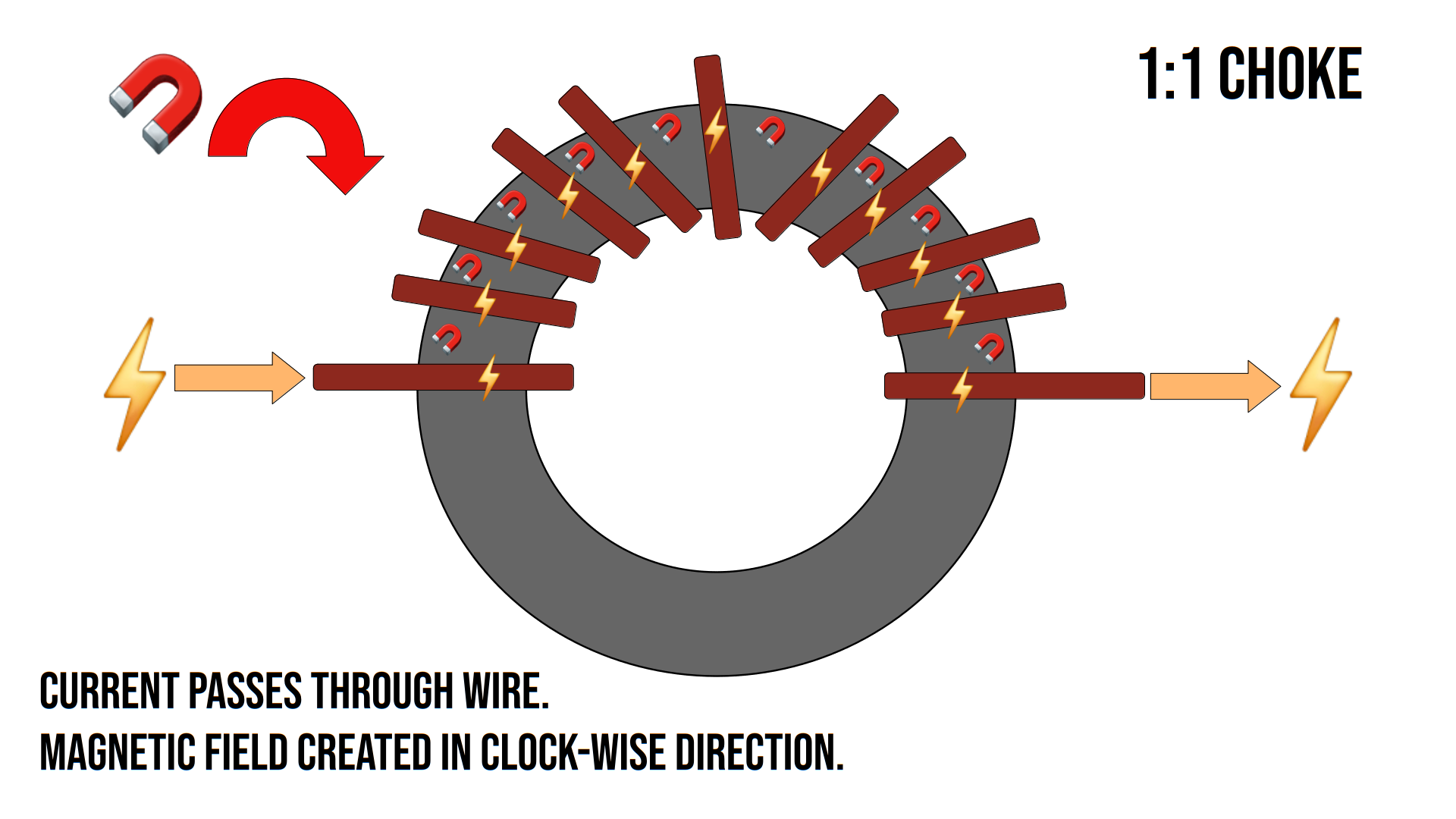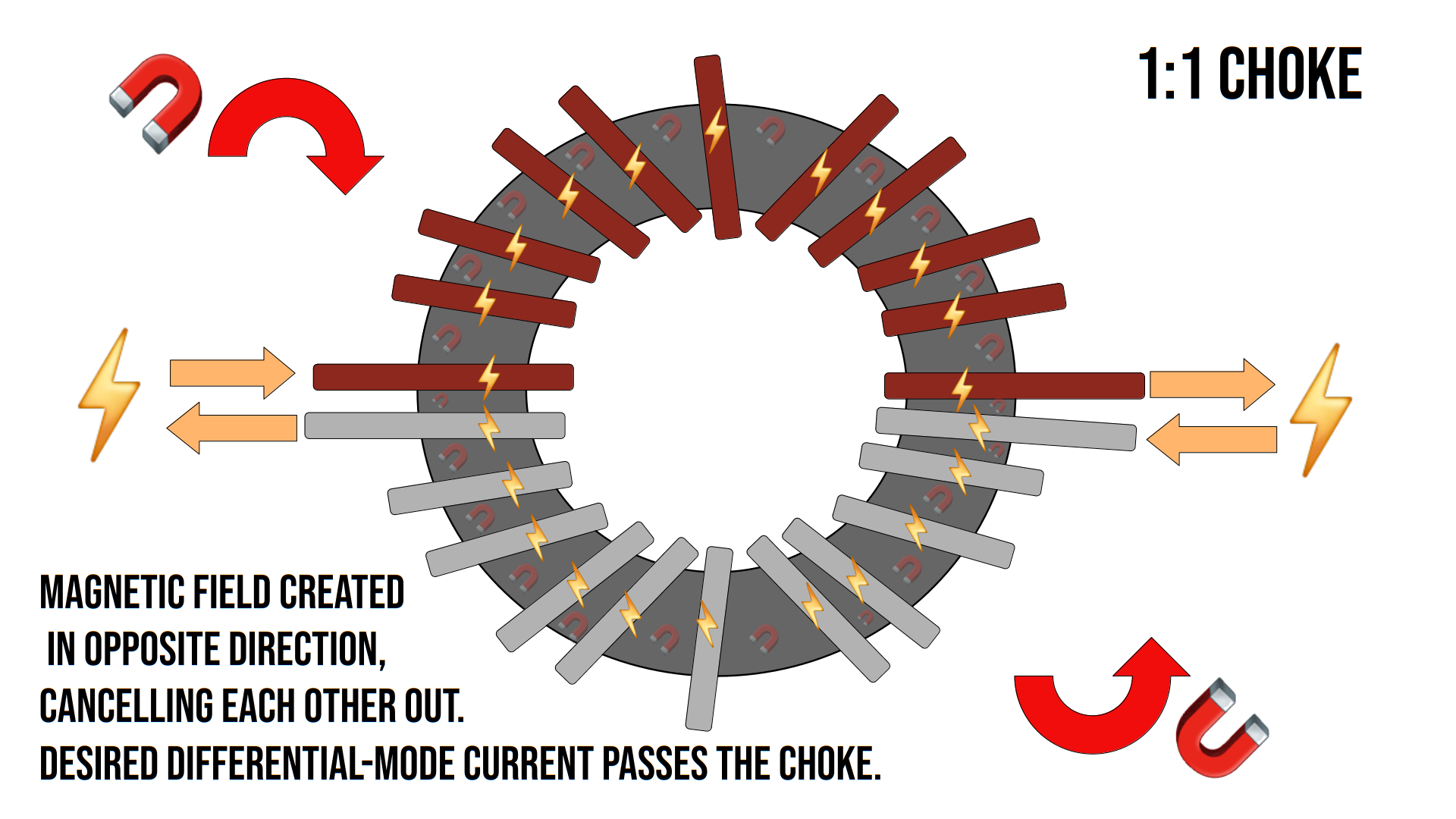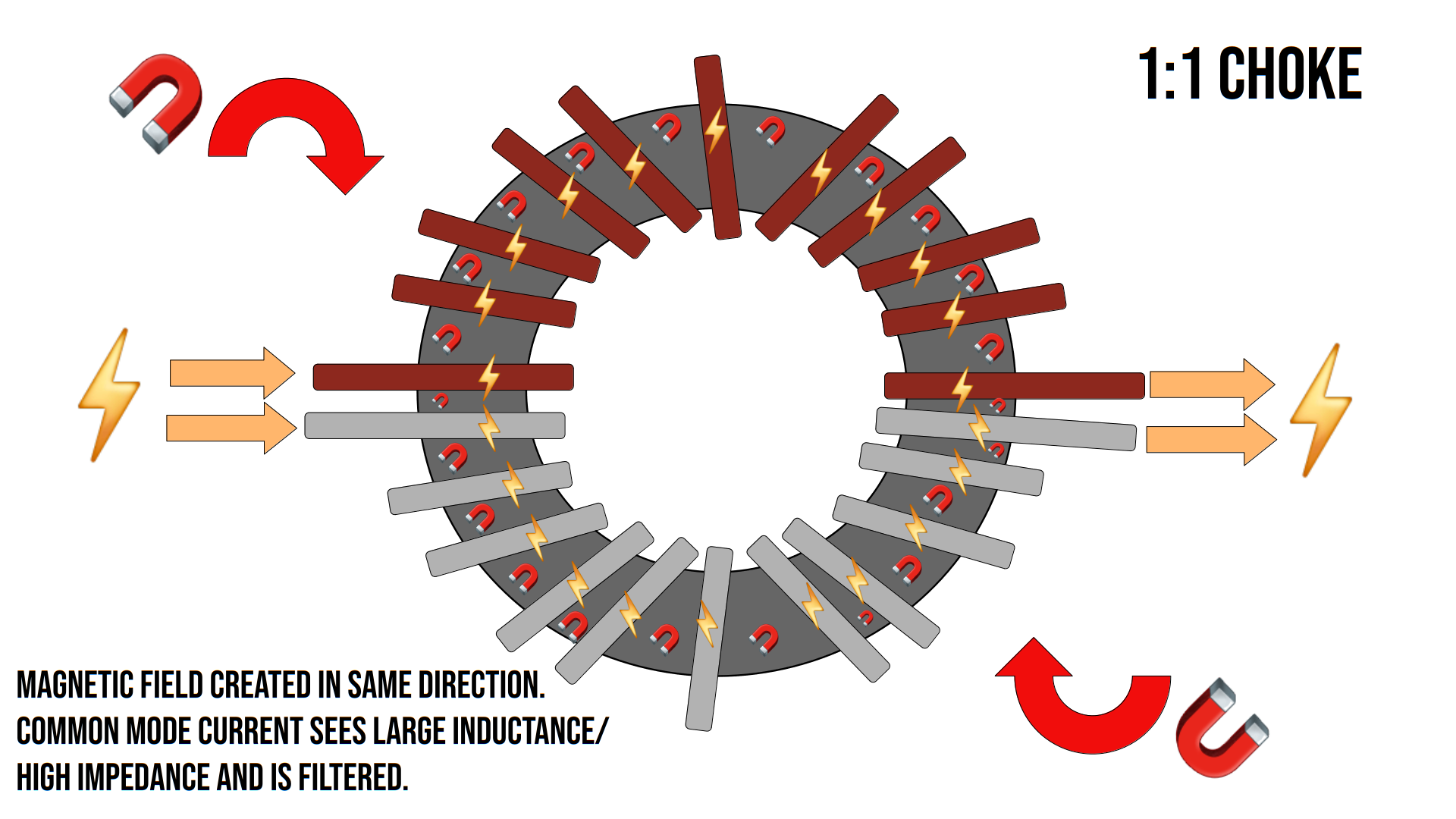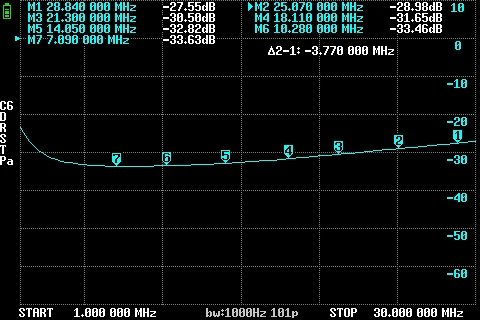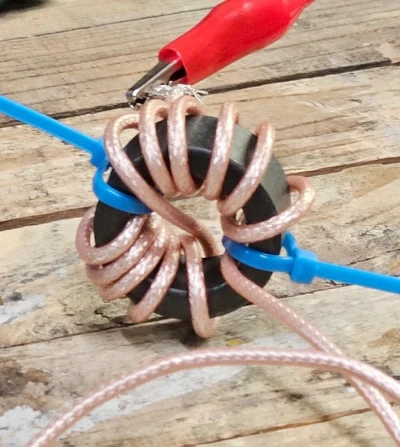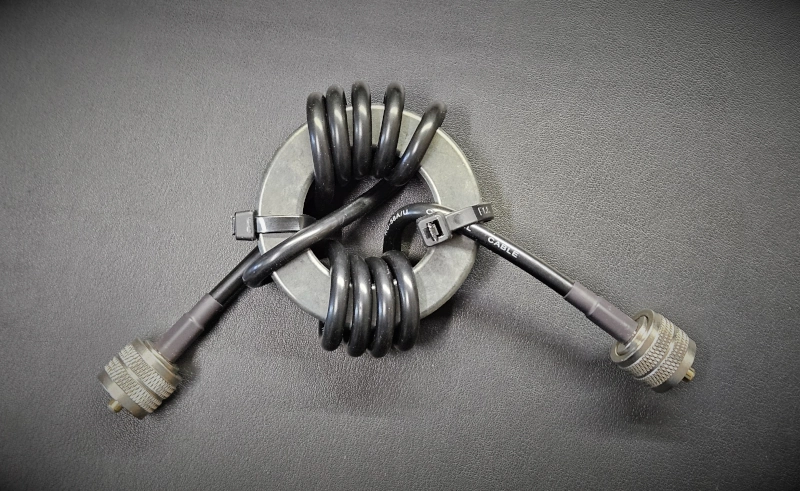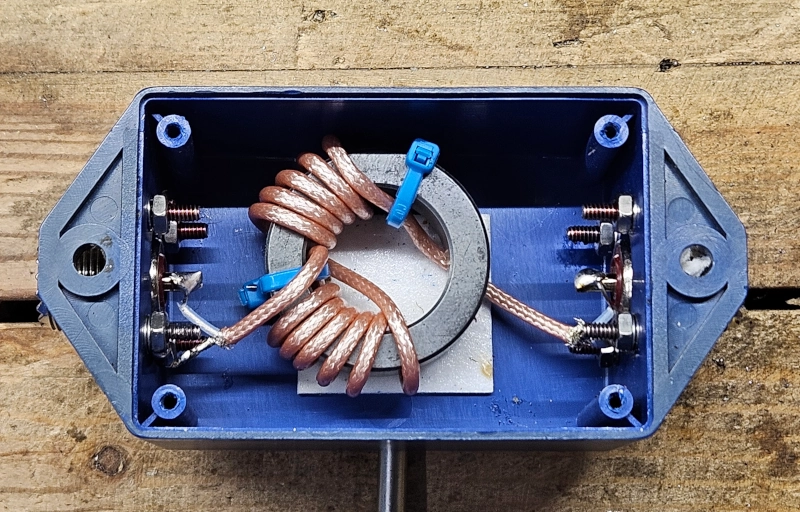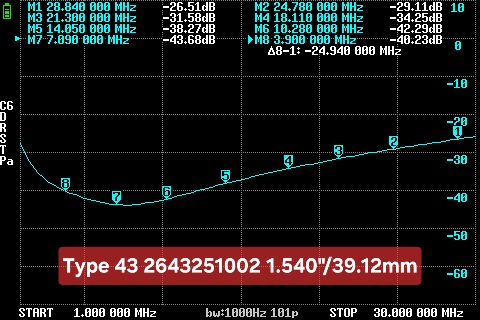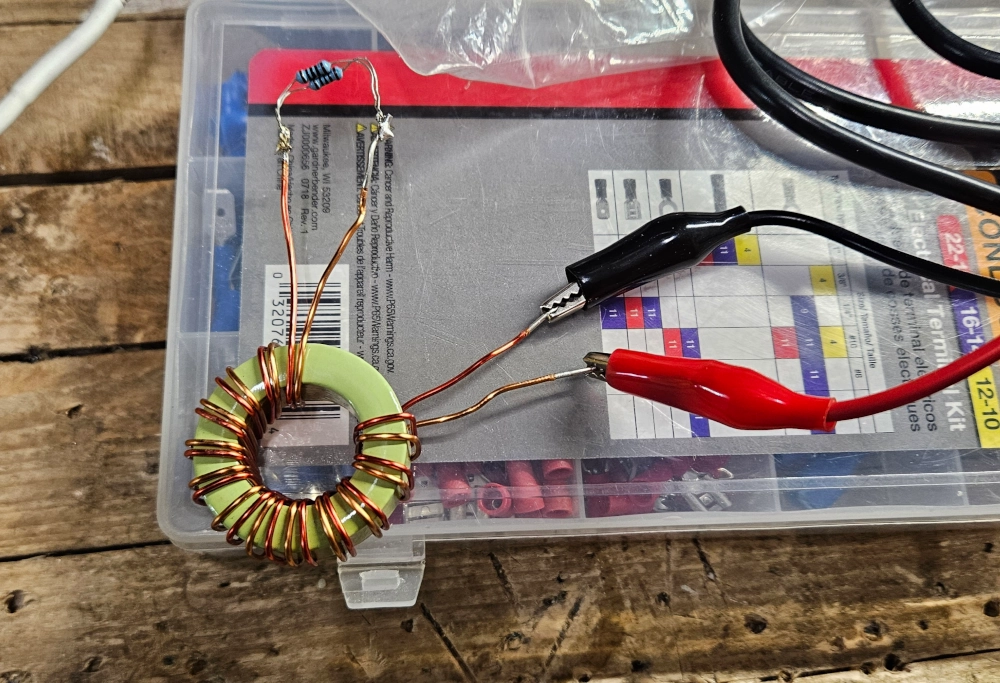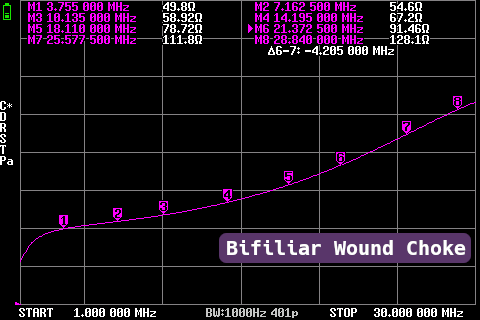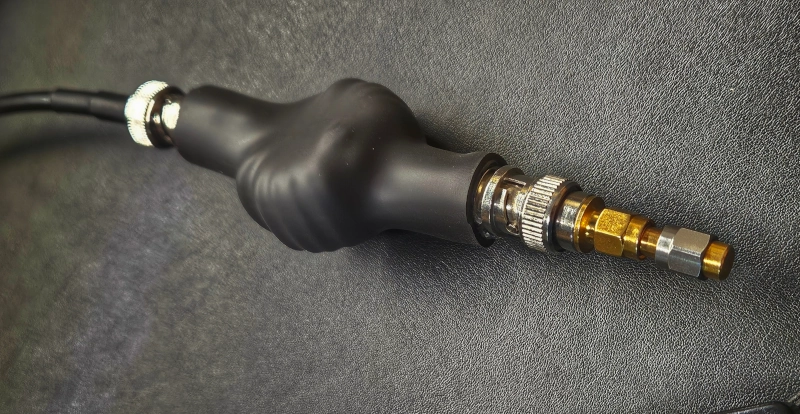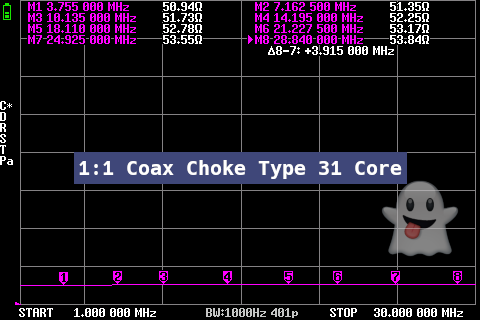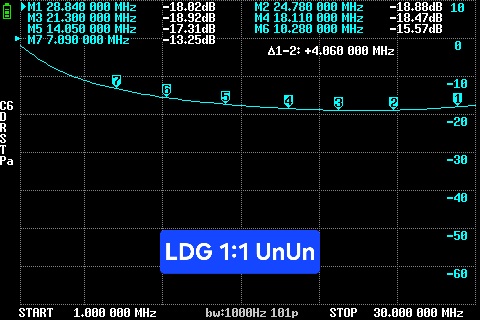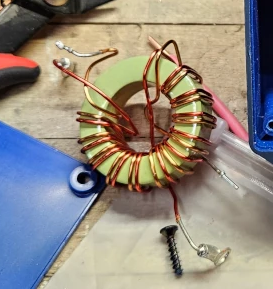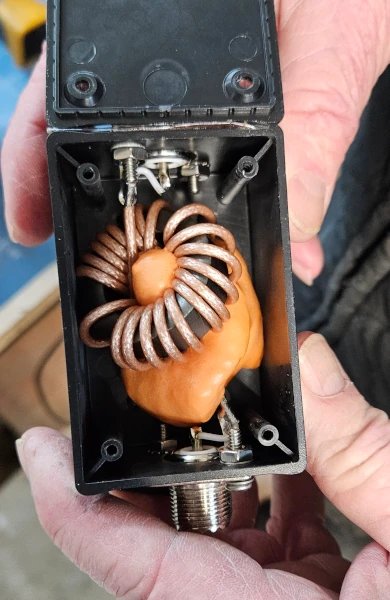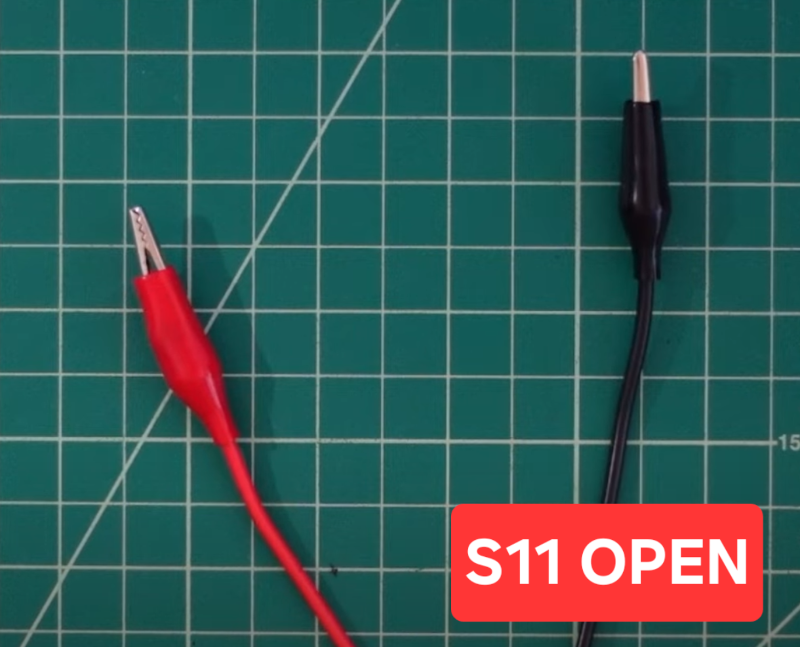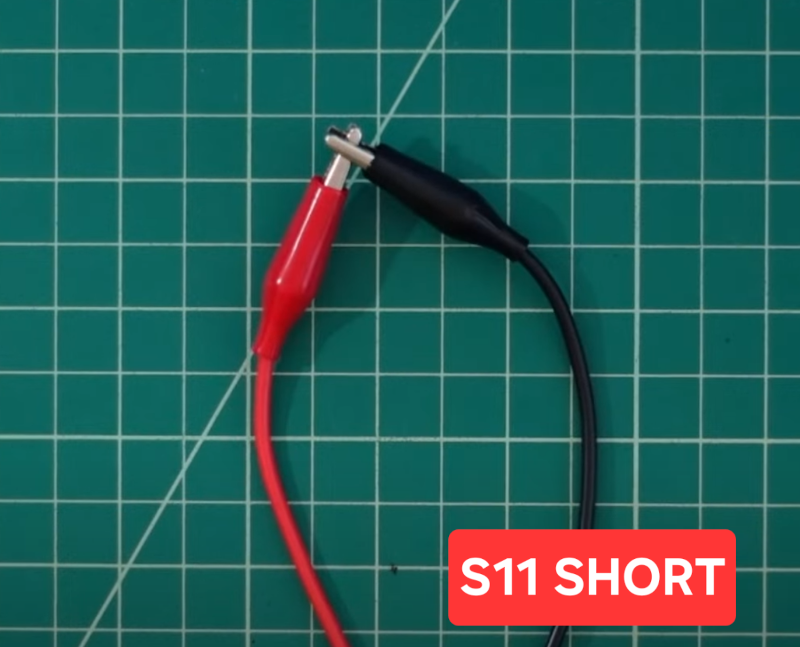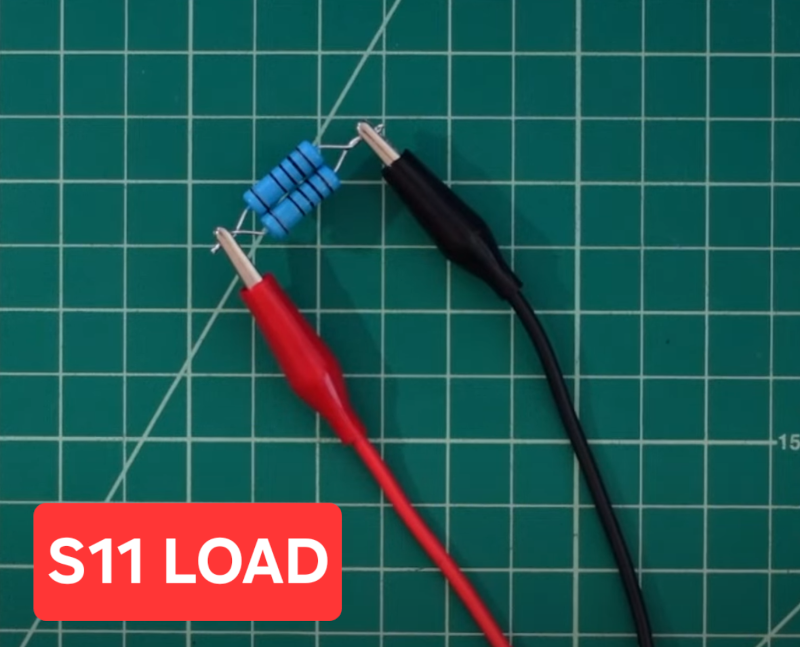On Chokes
At Winter Field Day 2025, I got to witness exactly what happens when you don’t choke coax. We had our newly made VA6AM band pass filters and triplexer setup and ready for their inaugural use. We were stoked to be able to have 4 stations operating at the same time for the first time in club history. We hooked everything up and got ready to operate. We started transmitting and everything worked awesome! But then, it happened. Whathahath ahtahthat whaaaahah … we could hear distortion from our adjacent stations coming through the rigs. Thankfully we had some (really poor) 1:1 chokes on hand. We installed them and our issues subsided.
What Happened?
What was happening? The coax shields were acting as antennas and picking up the adjacent station RF signals. This is what can happen all the time with coax. Stray signals can get picked up and bring that noise back to the shack. It’s a total pain. But thankfully there’s an easy fix. The miraculous 1:1 choke. Also called a choke balun or a balun choke or a 1:1 current balun. I just call them a choke based on their function. We want to choke those stray RFI signals. And also, common mode current that will likewise slip back down the outside braid of the coax and cause havoc.
How Does It Work?
A choke acts just like a one-way valve for common mode current (CMC). The desired differential current can pass but the bad common mode cannot come back through it.
How Do You Build Them?
They’re really quite easy to build. All you need is coax and a toroidal core. There are “dirty baluns” that are just loops of coax and they can work. There are also ferrite beads you can place on the outside of the coax or other wires. But nothing is as good as a toroidal 1:1 choke in my opinion.
I did a bunch of research into core types and builds before our club set out to make a set for Field Day use. I settled on two core types: 31 and 43. Both of these cores, when wrapped with RG-316 coax offered around -30dB or better attenuation. -20dB is considered great. So the performance of these cores is outstanding. Depending on the application, you can choose different core sizes. Bigger cores are for QRO and smaller are for QRP use. As far as I can gather, there aren’t any hard and fast industry standards about power ratings. Commercial product retailers will advertise various power ratings on their products. You can get an approximation from that. I also read that chokes will lose 40% of their power rating if SWR is 2:1 and 60-70% at 3:1. So it’s good to keep SWR well managed.
Type 31 Cores
- Size: 1.142” (29.01mm) OD. Core: 2631801202 $2.13 in 2025
This was wrapped with 12 Turns of RG316 Coax {24”} (6 + 6 with a cross over):
This is a very handy little size for incorporating into other builds like End Fed Half Wave transformers, dipole centers, etc. I’d run 100 watts SSB through it.
- Size: 2.4” (60.96mm) OD. Core: 2631803802 $13.15 in 2025
If you need to run more power, you can increase the core size and start stacking them. I had a 3’ coax jumper on hand and I wrapped this core with 11 turns. It likewise performed much like the smaller Type 31 core, being a bit worse on the 10M band. Due to it’s larger size I decided to use this as a choke for my 71’ Random Wire QTH antenna.
Type 43 Cores
- Size: 1.4” (35.55mm) OD. Core: 5943002701 $4.85 in 2025
The Type 43 core has even greater attenuation performance than the 31 Type, especially on the 20M and 30M bands. This is the core our club ended up building our chokes with.
- Size: 1.540” (39.12mm) OD Core: 2643251002 $12.22 in 2025
Just for fun, I wanted to see if my favourite transformer core was also a good performer as a choke. Look at that performance! -44dB on the 40M band. We made one choke out of this core for the club for the low bands/FT8.
Your Invisible Friend
In my original post about chokes, I was using bifiliar wire windings. It had great performance, much like the coax versions documented here. However, what I didn’t realize is that coax will maintain its 50 ohm impedance across the bands while my bifiliar version would not. It had wild take off on the higher bands as illustrated here:
As you can imagine, this is bad. It results with whacko SWR and losses galore. The choke needs to be invisible which means having a constant 50 ohm impedance. This was a critical detail that I didn’t know about. Switching to coax for the wire fixes this problem. Install a 50 ohm load on your choke and test with a Reflected Resistance trace on the Nano. It’s like it’s not even there. Perfecto.
My recommendation is DO NOT USE bifiliar solid core wire for making chokes. Just use coax.
Performance
As mentioned already, -20dB attenuation is great and anything more than that is tremendous. The performance of our DIY chokes is in the tremendous category as illustrated above with the NanoVNA measurements. Here’s a couple of examples of the performance from commercial choke products:
LDG
I’d been using LDG’s 1:1 chokes since I got involved with Ham Radio. So naturally I had to see what kind of performance they offer:
That is extremely poor performance! And yet without measuring them, how would you ever know? Often manufacturers won’t publish any performance data. I ended up gutting my LDG chokes and installing our DIY cores inside. You can see that it’s some kind of iron powder core instead of a ferrite.
Palomar
One of our club members had bought a Palomar choke advertised with -46dB of attenuation. But we used this choke on Field Day for our 10M station. Guess what? His radio kept getting lit up by the adjacent station. Any guesses why?
You can see why. It’s got legit -47dB on 160M. But on 10M only -16dB! So it’s not false advertising, per se, but it doesn’t have that same attenuation across the amateur bands.
They use this really cool sprayfoam type stuff to keep their chokes from rattling around. Pretty nifty!
Other Observations
Interesting things happen when you stack choke cores or change the winding count. The following measurement is from two Type 31 1.142” cores stacked. By changing the overall geometry of the choke, it starts to have more attenuation on the lower bands, more resembling the chunky Type 43 core above.
Measurements
Measuring choke performance is easy with the handy NanoVNA. The video links below are the resources I used to setup and configure my NanoVNA.
Alligator Clips Calibration - Quick Reference
S11 Open
S11 Short
S11 Load
S21 Load
S21 Thru
73 de VE5REV

